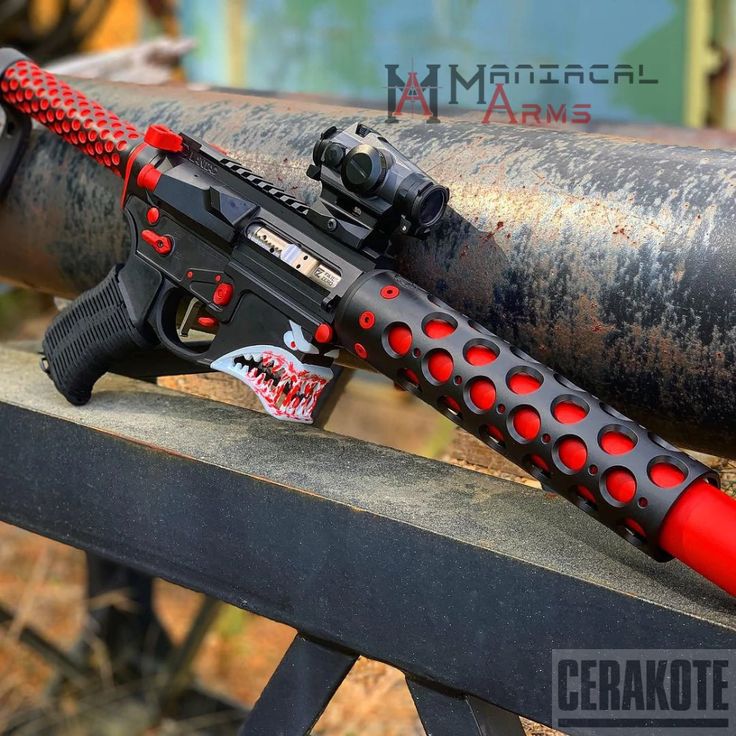How to Make Fashion Sketches: A Practical, Step‑by‑Step Guide for Beginners
Overview: From Idea to Sketch
Making fashion sketches is about communicating design intent clearly-silhouette, construction, and style lines-so ideas can move from concept to sampling. You will build a reusable croquis (figure template), draw flats and technical details, then render fabric, texture, and color to tell the story of your garment. This guide gives you an actionable workflow, step-by-step methods, and alternatives for different skill levels, so you can develop consistent, portfolio-ready sketches.
Step 1: Build or Source a Croquis (Your Reusable Figure Template)
A croquis is a base figure you draw on top of to visualize garments. Many beginners benefit from a standard “9-heads” fashion proportion to get an elongated, stylized figure that reads clearly in design reviews. Creating your own croquis helps you align proportions with your target customer (e.g., petite, plus, kids), while downloading or tracing a template can speed up your workflow. A practical path is to draft a simple croquis once, then print or duplicate it for every new outfit-this reduces decision fatigue and keeps proportions consistent across a collection. A step-by-step tutorial on constructing a 9-heads croquis provides clear staging: set guidelines, sketch the skeleton, then add shape, which you can reuse as a blank fashion template [1] . If you prefer an approachable introduction with an emphasis on reusing a base pose, a beginner-friendly overview on creating a croquis you can trace repeatedly is also available [2] .
Example: Draft your croquis with light pencil. Mark head heights down the page (nine equal segments). Block in the head, ribcage, pelvis, limbs as simple forms. Refine curves at the shoulders, waist, and hips, then clean up lines. Scan or photograph your final croquis to print on light gray for repeated use. If you need a different demographic later, repeat the process with adjusted proportions and store each as a labeled template.
Common challenges and fixes: If your figure feels stiff, add a subtle contrapposto (gentle hip and shoulder tilt). If proportions drift, re-establish head-height guides. If drawing from scratch is slowing you down, temporarily use a vetted template so you can focus on garment design details [1] [2] .
Step 2: Block the Silhouette and Fit
Start each sketch by mapping the silhouette-fitted, semi-fitted, relaxed, or oversized-and the garment’s overall shape (A-line, sheath, cocoon, boxy). Keeping silhouettes clear early prevents overworking details that don’t match the intended fit. A practical beginner method is to outline the garment shape on your croquis before drawing seams or trims. This top-down workflow-shape, then details, then refinements-is widely recommended for flat and fashion sketches because it communicates the big idea at a glance [3] .
Example: For a boxy cropped jacket, trace a rectangle spanning shoulder to mid-torso with slightly dropped shoulders. For a bias-cut slip, use gently curved, body-skimming lines. Keep the neckline, hemline, and sleeve openings clean and lightly drawn at first so you can adjust quickly.
Alternatives: If you struggle with shape, lightly trace reference garments from runway images or lookbooks you’re studying to practice silhouette recognition. Over time, reduce tracing and rely on construction knowledge. If you work digitally, use a vector rectangle and ovals to block shape layers, then refine with a pen tool.
Step 3: Add Design Details and Construction
Once the silhouette reads, add design details: seams, darts, pleats, gathers, plackets, collars, pockets, closures, and stitch lines. These elements communicate how the garment is built and functionally worn. For clarity, maintain line hierarchy: outer edges as heavier lines; interior seams and stitches as lighter or dashed lines. A straightforward beginner sequence is: shape (silhouette), then design details (seams, trims), then refinement (cleanup), which improves readability and speeds revisions [3] .
Example: On a shirt dress, add the center-front placket and button spacing, define yoke seams, place patch pockets, mark waist tie channel, and indicate topstitching as dashed lines. In vector software, you can apply a dashed stroke to represent stitching and differentiate seam types; tutorials demonstrate setting custom dash and gap values and using separate layers for front and back views to keep files organized [4] .

Source: fashiondesignacademy.co.uk
Challenges and fixes: If your sketch looks busy, reduce line weight on secondary details and reserve heavy lines for outer contours. If alignment is off, use guides or duplicate and mirror details (e.g., pocket placements) digitally. For hand sketching, lightly grid critical placements (button spacing, pleat intervals) before final lines.
Step 4: Draw Flats and Technical Views for Clarity
Flats (also called flat sketches or technical drawings) present the garment without a figure, focusing on accurate construction, symmetry, and proportion. They are essential for communicating with pattern makers and factories. Beginners can start with simple front and back views, adding callouts for closures, seam types, and grain direction as needed. Digital workflows in vector tools help maintain clean symmetry, precise line weights, and consistent stitch dashes; many professional tutorials emphasize separate layers for trims, seams, and topstitching to speed iterations [4] . A beginner-friendly guide also encourages a basic sequence of shape, details, and refinement for flat sketches, which keeps accuracy high [3] .
Example: For trousers, draw a straight-on front with waistband, fly, pockets, and crease; mirror the back with darts, yoke or patch pockets as designed. Use a thinner dashed line for topstitching and a center-front/back construction line (kept faint) to orient components. Add a small note for hem depth and stitch type when preparing spec packs.
Alternatives: If hand-drawing, use tracing paper to build clean mirrored halves; fold along the center line to test symmetry. Digitally, duplicate and reflect half the garment to ensure perfect balance, then join at center.
Step 5: Render Fabric, Texture, and Movement
Rendering breathes life into your concept and conveys fabric behavior. Use value to suggest folds and drape; add strategic highlights for sheen (e.g., satin) and soft transitions for matte knits. When illustrating on a croquis, hint at movement with directional folds and hemlines that respond to pose. Many beginner guides distinguish between minimal flat sketches (for accuracy) and more expressive illustrations (for mood and fabric feel). A practical rendering progression is: base color block, mid-tone shadows at stress points (under bust, at elbows, along side seams), then selective highlights to emphasize form. Beginner tutorials encourage adding color and texture after construction details so you don’t obscure critical seams and closures [3] . For figure drawing cues on smooth outlines and soft curves that flatter the 9-heads proportion, step-by-step demonstrations can help you refine edges and volume placement [5] .
Example: For a silk blouse, add soft, long folds emanating from shoulder seams and sleeve caps; place small specular highlights along the crest of folds and the upper chest. For denim, use heavier line weight at seams and subtle cross-hatching near stress points (pocket corners, knee). Keep hardware metallic with crisp highlights and small shadow anchors.

Source: wikihow.com
Challenges and fixes: If rendering muddies clarity, isolate color on a separate layer (digital) or render after you finalize linework (traditional). If fabric looks flat, increase contrast between light and shadow and follow the direction of tension and gravity.
Step 6: Create a Repeatable Workflow
Consistency is vital when you scale from one sketch to a full collection. A simple, reliable workflow many beginners adopt is: 1) select or print your croquis, 2) trace silhouette and neckline/hem, 3) add seams and key details, 4) clean linework, 5) color and texture, 6) annotate key construction notes, and 7) create flat views. A beginner-oriented process that starts broad and narrows to detail helps you avoid overworking early marks and keeps decision-making structured [3] [2] .
Example: Build a three-page per style system-Page 1: croquis with color and fabric notes; Page 2: black-and-white flats (front and back) with stitch dashes; Page 3: callouts and measurements. This structure can evolve into a tech pack later.
Tools and Materials: Analog and Digital
Start with what you have: pencils (HB for sketching, 2B for line weight), fineliners for clean outlines, an eraser, and marker or colored pencil sets for rendering. Tracing paper speeds iterations. Digitally, beginners often use vector software for clean flats and scalable linework; tutorials demonstrate stitch dashes, parallel lines, and clean symmetry for apparel construction drawings [4] . If you’re early in your journey, a simple croquis you can reuse repeatedly keeps your focus on design rather than redrawing anatomy every time [2] . When learning figure building, a structured 9-heads tutorial can shorten the anatomy learning curve and make your lines more confident [1] .
Practice Routines and Skill-Building
To improve quickly, set a weekly cadence: one croquis practice session, two silhouette drills, one flat drawing session, and one rendering study. Use timed exercises-5 minutes per silhouette-to force quick decisions. Rotate fabrics: one week satins and silks, another week denim and twill, then jerseys and rib knits. If hands feel shaky, warm up with line control drills (straight lines, ellipses, dashed strokes). For figure refinement and graceful curves across limbs and torso, follow guided demonstrations that emphasize smooth, confident outlines on a 9-heads figure [5] . For technical precision, practice stitch dashes and seam hierarchies using vector tools or meticulous pen work, as shown in beginner-friendly flat drawing tutorials [4] .
Troubleshooting: Common Issues and Solutions
Stiff figures: Add a subtle S-curve through the spine and counter-tilt shoulders and hips; reference a 9-heads construction guide to keep proportions elongated but dynamic [1] . Overcrowded details: Prioritize line hierarchy and use dashed strokes for stitching; separate layers or tracing sheets for trims vs. structure [4] . Inconsistent proportions: Reuse the same croquis per collection so garments read as a cohesive series [2] . Flat-looking fabrics: Place shadows where fabric is under tension or folds overlap; add subtle highlights for sheen after shadows so the volume reads cleanly [3] .
Portfolio and Presentation Tips
Organize sketches by collection theme and customer. Lead with a mood board, then show croquis illustrations for impact and flats for build accuracy. Label each style with key features (e.g., “bias-cut midi with cowl neckline, invisible side zip”). Keep colorways consistent with palette chips. Where helpful, include fabric swatches or digital textures. When sharing digital PDFs, ensure line weights remain legible and stitch dashes don’t disappear at print size-vector-based flats and properly set dash/gap values help maintain clarity across outputs [4] . For beginners, a practical approach is to reuse one or two croquis poses across a capsule so reviewers focus on the garments, not shifting anatomy [2] .
Alternative Approaches If You’re Short on Time
If you need to iterate fast, consider: 1) tracing over a pre-made 9-heads croquis so you can concentrate on the garment’s lines [1] ; 2) skipping figure illustration and going straight to flats for production-focused reviews [4] ; or 3) using a simplified croquis and minimal shading to hint at fabric behavior while keeping details crisp [3] . Beginners may find it helpful to establish one signature pose and line style to build speed and consistency across looks [2] .
Getting Started Today: A 60-Minute Action Plan
Minutes 0-15: Print or draft a 9-heads croquis. If drafting from scratch, mark nine equal segments, block skeletal forms, and lightly add shape [1] . Minutes 15-30: On tracing paper, outline the silhouette of your first garment and place neckline, hem, and sleeve shapes [3] . Minutes 30-45: Add seams, closures, pockets, and stitch dashes; keep line hierarchy clear [4] . Minutes 45-60: Apply basic shading or color to suggest fabric and drape; refine edges and add any essential notes or callouts [5] . Save or scan your work, name the file with style code and date, and note one improvement for the next session.
References
- Amiko Simonetti (2024). Fashion Sketching: Step-by-step Guide to the Basic Fashion Croquis with 9 Heads.
- A Beautiful Mess (2023). Fashion Sketching for Beginners.
- Upskillist (2020). How to Draw Fashion Sketches: Step-by-Step Guide for Beginners.
- YouTube (2021). Technical Drawing for Fashion: Part 1.
- YouTube (2021). How to Draw Fashion Figures • Step-by-Step Tutorial for Beginners • 9 Heads.


